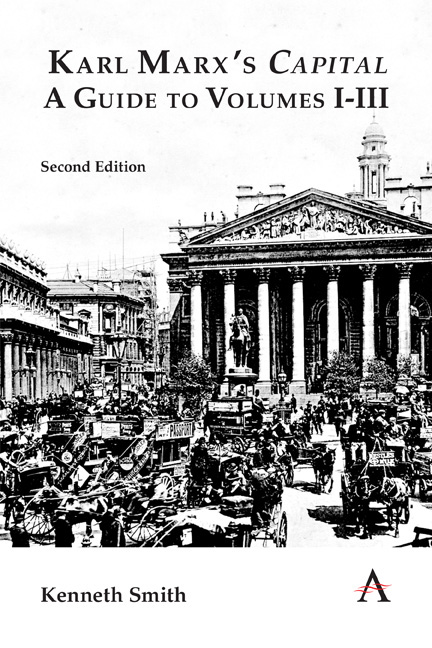Book contents
- Frontmatter
- Dedication
- Contents
- Preface to the Second Edition
- Introduction
- Part I The Development of the Capitalist Mode of Production
- Part II The Capitalist Mode of Production
- Part III The Underdevelopment of the Capitalist Mode of Production
- Part IV The Value Theory of Labour
- Conclusion to Part IV
- Conclusion
- Appendix: On Social Classes
- Notes
- Bibliography
- Index
- Frontmatter
- Dedication
- Contents
- Preface to the Second Edition
- Introduction
- Part I The Development of the Capitalist Mode of Production
- Part II The Capitalist Mode of Production
- Part III The Underdevelopment of the Capitalist Mode of Production
- Part IV The Value Theory of Labour
- Conclusion to Part IV
- Conclusion
- Appendix: On Social Classes
- Notes
- Bibliography
- Index
Summary
In Part IV of this book I have distinguished Marx's concept of the rate of profit from his concept of the rate of surplus value and hence brought out even more dramatically than before the distinction between profit and surplus value. We have also seen how Marx distinguishes between the concepts of labour-power and labour, and surplus and necessary labour. In doing this I have shown how this method of distinguishing between two things that are usually thought of as being one and the same thing is characteristic of Marx's method generally and therefore of his usual way of proceeding in these matters. I have also gone to some lengths to outline what I have called a general theory of the value of labour – one in terms of the degree of ease or difficulty of reproducing something – in order to distinguish this from what Diane Elson calls a value theory of labour. In this way I have tried to apply Marx's theory of value to a wider range of things than mere exchange values, or commodities, and in doing have tried to account for the value we attach to those things which are not usually exchanged or exchangeable. As Adam Smith suggested more than two hundred years ago now, those things which have value are of two kinds: those which can be reproduced, which are therefore exchangeable as commodities, and which hence have a value that can easily be measured, and those things which cannot be reproduced at all, which are more often than not use values rather than exchange values, and hence the value of which cannot easily be measured. This second category of things is literally priceless to us, however, just because the value of a thing cannot easily be measured is not to say it does not have any value at all. As Marx says, nature – in which the value of labour-power is itself embodied – is the source of all use values, some of which can be exchanged and some of which cannot, and labour merely adds value to that which already exists in nature. Labour is not the source of all value therefore, but only of all surplus value (i.e. the additional value which labour creates and which it adds to that which already exists in nature).
- Type
- Chapter
- Information
- Karl Marx's 'Capital': A Guide to Volumes I-III , pp. 168 - 170Publisher: Anthem PressPrint publication year: 2021



